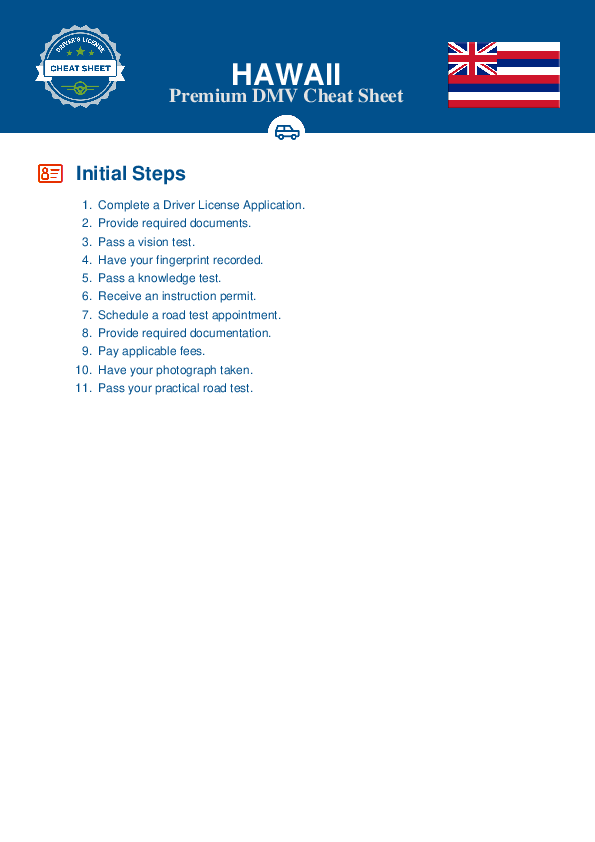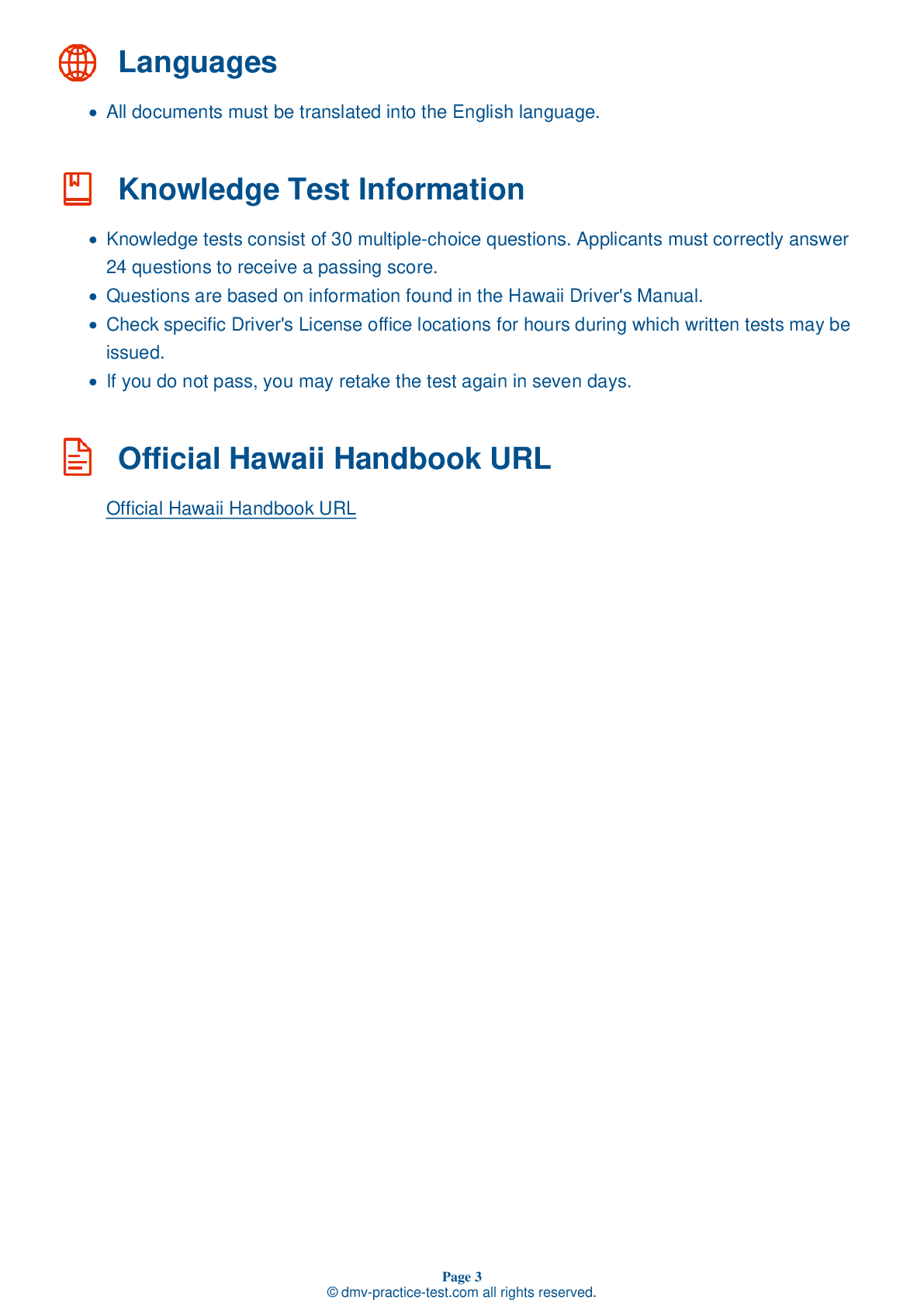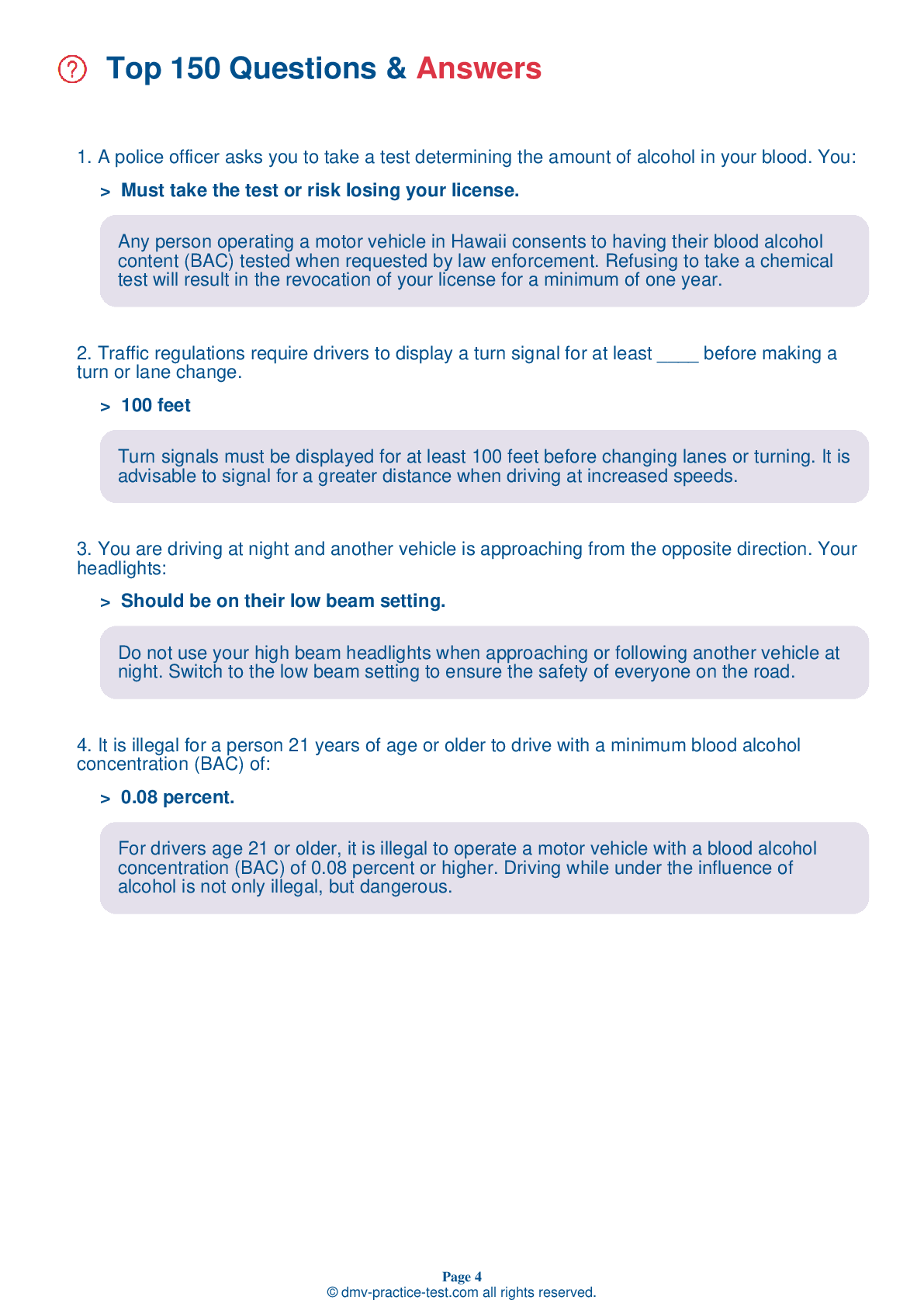FREE Hawaii DMV Practice Test | Driving License Permit test Hawaii 2025 #3
This set of practise tests for the Hawaii DMV has been updated for January 2025. It includes questions based on the most important traffic signs and legislation for 2025 from the Hawaii Driver Handbook. To study for the DMV driving permit test and driver's licence exam, use actual questions that are very similar (often identical!) to the DMV driving permit test and driver's licence exam.
Each question on the practise exam has a tip and explanation to help you recall the ideas. Questions about traffic rules, traffic signs, and driving statutes, as well as information from the Driver Handbook, will be included in the written portion of the official DMV test.
You must properly answer 24 of the 30 questions to receive a passing mark. To help you prepare for your Hawaii instruction permit or driver's licence, take our DMV practise test.
The DMV exam is offered in a variety of languages.
Using any form of testing help will result in an automatic fail, and the DMV may take further action against your driver's licence, so avoid it.
1 . This sign means:
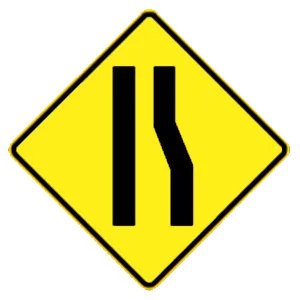
Warning signs are usually diamond-shaped with black markings on a yellow background. They alert drivers to upcoming hazards. This sign warns drivers that the right lane is ending or that the road is narrowing ahead.
2 . When approaching a steady yellow traffic light, drivers should:
A steady yellow traffic light indicates that a red light is about to appear. Stop unless you are already within the intersection.
3 . This road sign means:
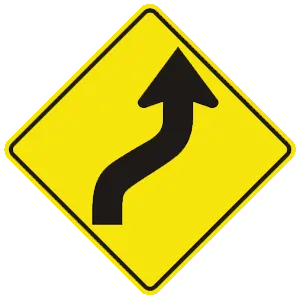
This sign indicates that the road ahead curves to the right and then to the left. You should slow down to be able to negotiate these curves safely.
4 . You may pass a school bus from the front or rear on an undivided roadway:
You may not pass a school bus on an undivided highway from either direction while the school bus is using its flashing red lights. If there are no flashing red lights, you may pass normally.
5 . It is important to be alert to motorcycles because:
Motorcycles are smaller and harder to see than cars. Because of their size, they are easily hidden in a car’s blind spot. It may be difficult to judge your distance to a motorcycle and difficult to tell how fast a motorcycle is moving, so always be alert and extra cautious when near a motorcyclist.
6 . A fully loaded tractor-trailer traveling at 55 mph could take up to ____ to come to a complete stop.
Tractor-trailers take longer distances to stop than smaller cars traveling at the same speed. A fully loaded tractor-trailer may take almost 400 feet to come to a complete stop when driving at 55 mph.
Need Car Insurance? No problem!
Compare the best rates in Hawaii and find a personalized policy that meets your needs.
1. Are You Currently insured ?
2. Married ?
3. Do you own your Home?
4. Do you have more than 1 car ?
5. Have you or a Family Member Honorably Served in U.S. Military ?
6. Your Name
7. Age
8. Zip code
IMPORTANT REMINDER:Auto Insurance is Mandatory to drive in Hawaii. Get covered before you hit the road to avoid any fines.
Ranked by best match
2025 Hawaii | Frequently Asked Questions
1. Be at least 15 1/2 years old.
2. Complete a state-approved driver's education course and receive a Certificate of Completion.
3. Visit the local DMV with a parent or guardian.
4. Bring necessary documents: proof of identity, proof of legal presence, social security number, and two proofs of Hawaii residency.
5. Pass the written knowledge test.
6. Pay the required fee.
